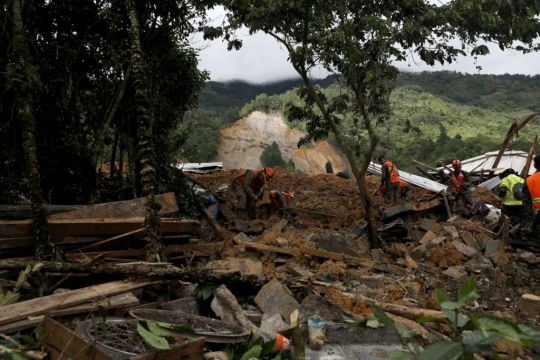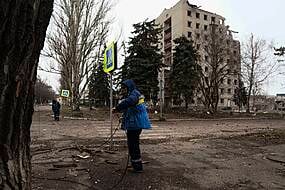A strengthened Tropical Storm Eta made landfall on Cuba early on Sunday and had its sights set on the southern tip of Florida after leaving dozens dead and over 100 missing in Central America, where it hit last week as a major hurricane.
Eta breached Cuba even as searchers in Guatemala were still digging for people believed to have been buried by a massive, rain-fuelled landslide.
Authorities have said that 15 people are confirmed dead and at least 109 are missing in Guatemala, many of them in the landslide in San Cristobal Verapaz.

Pope Francis spoke on Sunday about the population of Central America, hit “by a violent hurricane, which has caused many victims and huge damage, worsened as well by the already difficult situation due to the pandemic”.
Speaking to people gathered in St Peter’s Square, Pope Francis prayed that “the Lord welcome the deceased, comfort their families and sustain … all those who are doing their best to help them.”
The US National Hurricane Centre issued tropical storm warnings for southern Florida and the Florida Keys, and warnings were issued for central Cuba, parts of southern Florida and the Keys were put under a hurricane watch.
The Hurricane Centre said Eta was located about 60 miles (95km) southwest of Canagua, Cuba, on Sunday morning and was moving north-northeast at 12mph (19kph). Maximum sustained winds had decreased slightly to 60mph (95kph). The system was expected to approach the Florida Keys and south Florida late Sunday or Monday.

Florida Governor Ron DeSantis declared a state of emergency on Saturday for eight counties at the end of the state as Eta approached, urging residents to stock up on supplies. South Florida started emptying ports and a small number of shelters opened in Miami and the Florida Keys for residents in mobile homes and low-lying areas.
Miami-Dade County declared a state of emergency on Friday night and also warned that a flood watch would be in effect through to Tuesday night.
Further south in the Keys, officials were monitoring the storm closely, but had no plans yet to evacuate tourists or residents. They urged residents to secure their boats and encouraged visitors to consider altering plans until Eta had passed.
“Residents need to monitor this storm and be prepared for high tropical storm force sustained winds and hurricane strength gusts,” said Shannon Wiener, Monroe County emergency management director.

Eta was once a Category 4 hurricane, and authorities from Panama to Mexico were still surveying the damage following days of torrential rains during the week.
In Guatemala, search teams first had to overcome multiple landslides and deep mud just to reach the site where officials have estimated some 150 homes were devastated.
In the worst-hit village, Queja, at least five bodies have been pulled from the mud. The indigenous community of about 1,200 residents consisted of simple homes of wood and tin roofs clinging to the mountainside.
In southern Mexico, across the border from Guatemala, 20 people died as heavy rains attributed to Eta caused mudslides and swelled streams and rivers, according to a Chiapas state civil defence official.
The worst incident in Mexico occurred in the mountain township of Chenalho, where 10 people were swept away by a rain-swollen stream – their bodies were later found downstream.
The US National Hurricane Centre later said the storm could become a hurricane before reaching the Florida Keys and it declared hurricane and storm surge warnings for the Keys from Ocean Reef to the Dry Tortugas, including Florida Bay, with the storm expected to reach that area by Monday night or early Tuesday.







